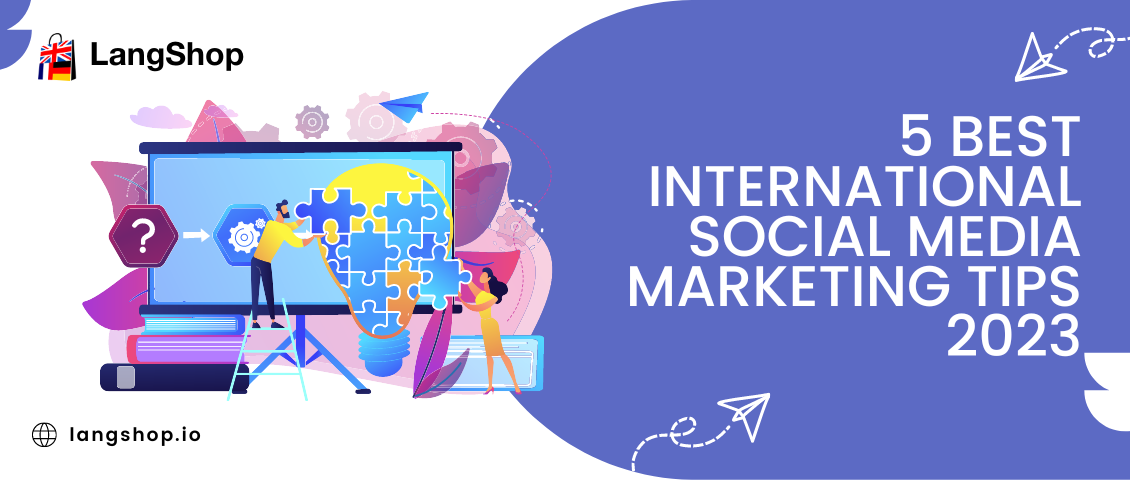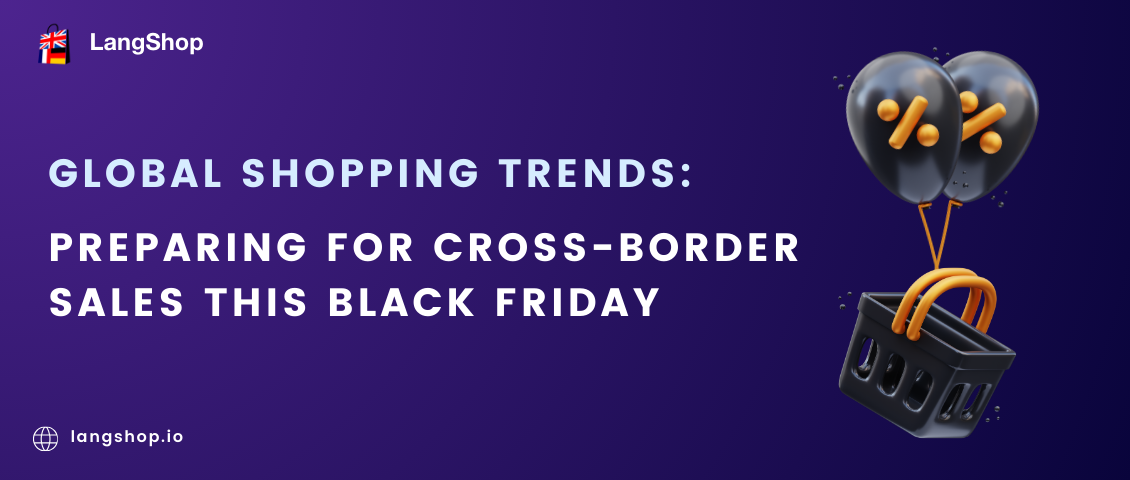Social media has transformed the way people interact and communicate with each other. As social media becomes more popular in all spheres of life, it is increasingly becoming a vital platform for eCommerce businesses. The term social commerce has emerged as a result of this trend. According to Statista, the value of global sales through social media platforms was estimated to be 992 billion U.S. dollars in 2022, and this figure is expected to grow even more in the future.
The rise of social commerce presents an opportunity for eCommerce businesses to reach a wider audience and expand their customer base. However, selling internationally through social media can be a daunting task, as it involves dealing with different cultures, languages, and payment methods. eCommerce businesses must be aware of these challenges and take the necessary steps to overcome them.
In this post, you can learn what are the success strategies for using social media in international marketing and how to maintain your social media accounts when selling globally.
How to create a powerful international social media strategy in 5 steps
An international social media strategy is a plan that outlines how a business will use social media to connect with customers in different countries and regions. In comparison with the domestic social media strategy, the international one requires cultural differences, language barriers, and varying habits to be taken into account.
To assist you in creating a social media strategy that effectively resonates with your target audience, we've compiled a list of five crucial steps to follow. These steps will aid in developing a robust and successful international social media strategy.
1. Conduct a research
When developing an international social media strategy, it is crucial to conduct thorough research to understand the social media landscape in the target market. This research should include identifying the most popular social media platforms used by the target audience, which may differ from those used domestically.
For example, one of the most popular social media platforms, Facebook, is blocked in China. So if you are going to build social media presence in Chinese market, you should try WeChat and Weibo that are widely used in this country. In Japan, Instagram is popular, and the platform is often used to showcase beautiful images and creative visual content. In South Korea, Naver is a widely used platform, and businesses often incorporate the Korean language into their content to connect with local audiences.
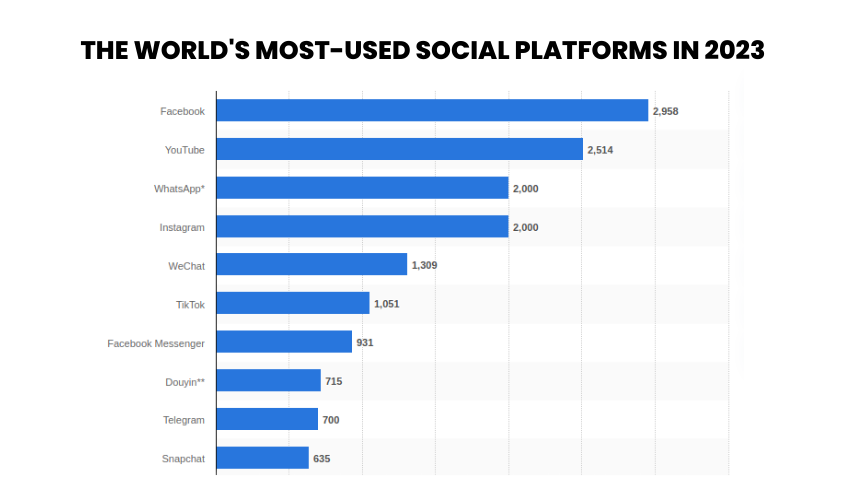
After identifying the most popular social media platforms in the target market, the next step is to understand the type of content that resonates with the audience. This includes the use of language, visuals, and communication style.
To effectively connect with the target audience, businesses should use slang words, popular abbreviations, and emojis commonly used by the audience. Doing so can help make the business seem more relatable and endearing to the audience. For instance, in Brazil, businesses often use informal language and incorporate humor into their content to connect with local audiences.
Additionally, visuals play a significant role in social media content, and businesses should use images and videos that resonate with the target audience. For example, in India, businesses often use vibrant and colorful visuals to grab the audience's attention.
To understand this kind of preferences of the international audience, you can examine the most popular accounts of industry representatives, influential individuals, and global brands that also operate in this market.
Questions you should ask yourself:
- What social media platforms are most popular in the target country?
- How do people in the this country use social media?
- What kind of content is most popular on social media in the country?
- What are the cultural and social norms in the target country that may impact social media use and content?
- What is the target audience's age range and demographics?
- Who are the key influencers and competitors in the local market?
- Are there any legal or regulatory restrictions on social media in the target country?
2. Create content in the target language
An essential aspect of localization in social media strategy is translating the content into the language of the target audience. Unfortunately, for social media translation there is no such a great Shopify language translation app as LangShop, but you can try some basic translation tools such as Google, DeepL or Reverso Context. Social media captures are usually quite short, so translation won’t take so much time compared to the whole website translation.
However, for a really effective social media strategy, we’d recommend you to have a team member who speaks the target language fluently. Creating content in the language that your audience speaks rather than simply translating will make your posts more understandable and help you attract more followers.
One of the reasons for this is that social media posts often contain slang words, abbreviations, and humor that are unique to the target audience. A native speaker or someone proficient in the language can better capture these nuances and create content that resonates with the audience. Moreover, it's important to ensure that the translation accurately reflects the intended message, as machine translation can sometimes result in awkward phrasing or even errors. By having a team member who speaks the target language, you can ensure that your social media strategy effectively reaches and engages your international audience.
But localization of your social media content isn't just limited to text. In fact, visual elements such as images and videos are usually more significant, because they capture customers’ attention. It's crucial that these elements are not only eye-catching, but also easily understandable to the target audience.
Different countries have different preferences when it comes to color schemes, design elements, and visual aesthetics, so it's important to take these nuances into account.
For instance, red is considered lucky in China, but in South Africa, it's associated with mourning. Similarly, certain design elements may resonate well with audiences in one country but not with those in another. Therefore, when localizing your social media strategy, it's essential to research and understand the visual preferences of your target audience.

Questions you should ask yourself:
- What are the cultural differences between my country and the target country, and how do they affect the way people use social media?
- What are the best practices for each platform you are going to use?
- What language should I use, and how can I ensure that my translations are accurate and appropriate?
- Can I afford to hire a native speaker to handle social media for this country, and how worthwhile it will be?
- What are the preferred types of content in the target country, such as videos, images, or text posts?
- What topics and trends are currently popular in the target country, and how can I incorporate them into my posts?
- How can I tailor my content to appeal to the target audience, while still staying true to my brand's voice and message?
3. Develop a tailored posting approach for international audiences
When it comes to posting content for international audiences, one important consideration is how to approach the actual posting process. There are generally three main approaches to consider.
1. Make multiple posts with similar content
The first option is to simply post the same content in multiple languages through a single account. However, this can be problematic as it may lead to confusion or even annoyance among viewers who see multiple posts with the same content in different languages. Even if you decide to post different things in different languages, it can still be confusing for viewers who may not understand the purpose of each post.
2. Post with multilingual captions
The second option is to create one post with multiple captions in different languages. While this approach can be helpful in some cases, it's not always the best option as not all social media users may read the text caption, and not all platforms allow for multi-language subtitles. Moreover, as with any marketing campaign, it's important that social media posts clearly transmit their intended message. If you choose this method, be sure to consider all the nuances of each language and culture to ensure that your message is effectively conveyed.
3. Create country-specific accounts
The third and most recommended option is to create country- or language-specific profiles. This approach allows you to clearly delineate your audiences from different countries and build a unique experience for each language group. While this approach may require more effort and resources to manage multiple accounts, it can be a highly effective way to tailor your content to specific audiences and build engagement in each language group.
It's important to note that localization should not only apply to text, but also to visuals and videos. Different countries may have different preferences for colors, designs, and visual styles, so taking these nuances into account can help ensure that your country-specific social media posts are appealing and effective.
Just be sure to plan ahead and allocate the necessary resources to manage each profile effectively.

Questions you should ask yourself:
- Do I have the resources to manage multiple social media accounts in different languages?
- What is the best approach for posting to international audiences? Should I post similar content in multiple languages, or should I create separate accounts for each country or language group?
- How do I tailor my content to the preferences of my target audience in each country?
4. Identify the best time for posting
Another important factor in successful social media posting is timing. Posting at the right time can significantly impact the engagement and reach of your content. However, with audiences located in different time zones, it can be challenging to determine the optimal posting time.
As a general rule, it's recommended to post during peak hours when your target audience is likely to be active on social media. This can vary depending on the platform and the audience. For example, on Instagram, the best times to post are typically during weekdays between 10 am to 3 pm. On Twitter, the optimal time is during weekdays from 8 am to 4 pm.
Besides, different countries prefer surfing the social media in different time. So you should adjust a post schedule by audience preferences and social media platform as well.
For instance, in the United States, the best time to post on Facebook is during work breaks, such as lunchtime, around 1-3 PM on weekdays. However, on Instagram, posting during off-work hours, from 5 PM to 9 PM, is more effective.
In Europe, the best time to post on Facebook is during weekdays, particularly around noon, while on Instagram, the optimal posting time is during evenings and weekends.
In Asia, different countries have different peak hours. In Japan, Facebook and Instagram have high engagement during weekday evenings, while in India, posting during the week, particularly on Wednesdays, Thursdays, and Fridays, is more effective.
It's also essential to consider the location of your audience. For example, if you're targeting audiences in different countries, you'll need to account for the time difference. It may require adjusting the timing of your posts or creating separate posts for each time zone.
And, finally, don’t forget that consistency is also a critical factor in successful social media posting. Your audience should come to expect regular updates from your brand and engage with your content on a consistent basis. Posting sporadically or infrequently can lead to a loss of engagement and followers.
To maintain consistency, it's a good idea to create a content calendar that outlines what and when you'll post on each platform. Tools like Zoho Social and Loomly can help you manage multiple social media accounts in different languages and provide you with a convenient calendar to organize social media posting appropriately. This will allow you to stay on track and ensure that you're posting consistently across all your accounts.
Questions you should ask yourself:
- Who is my target audience and what time zone(s) are they in?
- When is my target audience most active on social media?
- Are there any cultural or regional factors that could affect the best posting time?
- Are there any events or holidays coming up we can employ to our strategy?
- What social media scheduling tools are available to help me schedule posts at the optimal times for my target audience?
- How frequently should I be posting on social media in order to maintain engagement and visibility with my target audience?
5. Track success metrics
As a key step for creating an effective international social media strategy, it's important to identify what you consider to be success. This could be anything from addressing customer questions and educating them about your products or services, to increasing sales and driving website traffic. Once you have defined your goals, it's important to analyze your social media performance and determine whether you have achieved your objectives.
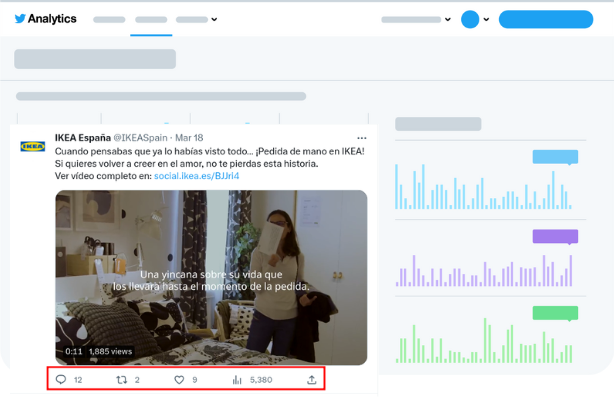
This can be done by tracking metrics such as engagement rates, click-through rates, and conversions. By regularly monitoring your social media analytics, you can gain insights into what content resonates with your audience and what tactics are most effective in achieving your goals. This information can then be used to refine your strategy and make data-driven decisions.
Questions you should ask yourself:
- What were the goals of the social media campaign, and were they achieved?
- Did the campaign result in increased engagement, such as likes, comments, and shares?
- Did the campaign result in increased website traffic, leads, or sales?
- Did the campaign result in increased brand awareness or social media following?
- Was the campaign within budget and did it achieve a positive ROI (return on investment)?
- What can be learned from the campaign's successes and failures, and how can future campaigns be improved?
By conducting research, identifying goals and target audience, creating a strategy, and analyzing performance, you will have a clear understanding of what works and what doesn't in your social media marketing efforts. This will help you make informed decisions on how to optimize your approach and maximize the benefits of social media for your business. Remember, social media is a dynamic and constantly evolving landscape, so it's important to stay up-to-date with trends and adapt your strategy as necessary to stay ahead of the curve.
2023 social media trends
To help you on your way to success, we created this list of 5 top trends to incorporate into your international social media strategy in 2023.
#1 Video content
Video content continues to be a popular format for social media in 2023. Videos can help you tell your brand's story in an engaging and interactive way. Platforms such as TikTok have seen a surge in popularity, and it's important for businesses to incorporate video into their social media strategy to stay relevant and engage with their audience.
When creating video content, it's important to keep it short and engaging, as attention spans can be short on social media. Videos that are 10 minutes or less are more likely to be watched and shared, so it's important to focus on getting your message across quickly and in a visually appealing way.
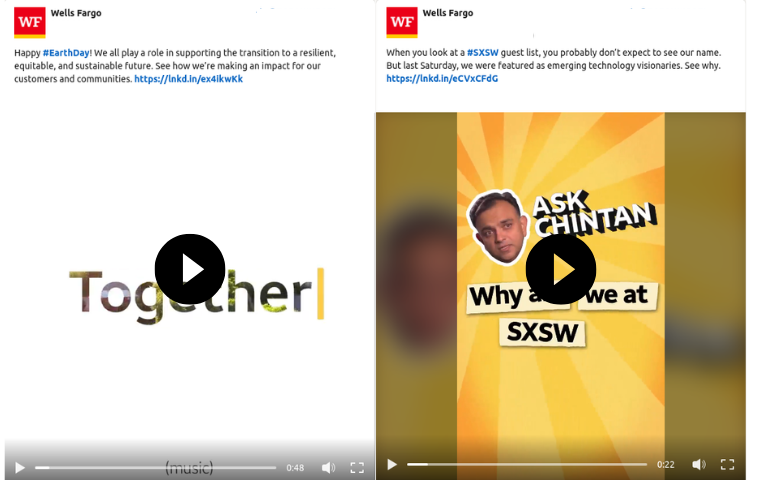
Also, try to create videos in the language your target audience speaks. Don’t make your potential buyers go through the subtitle challenge.
In addition, it's important to consider the platform you'll be posting on and create content that fits the specific format and style. For example, TikTok videos tend to be short and highly edited, while Instagram Reels and YouTube videos may be slightly longer and more informative. By understanding the nuances of each platform, you can create video content that resonates with your audience and maximizes engagement.
#2 Live streaming
Going live can help you engage with your audience on a personal level, answer their questions, and showcase your products or services in real-time. To make the most of this trend, it's important to plan your live streams in advance and promote them to your audience. You should also make sure your live streams are visually appealing, have good audio quality, and are hosted in a suitable location. And don't forget to engage with your viewers during the live stream to make it a two-way conversation.
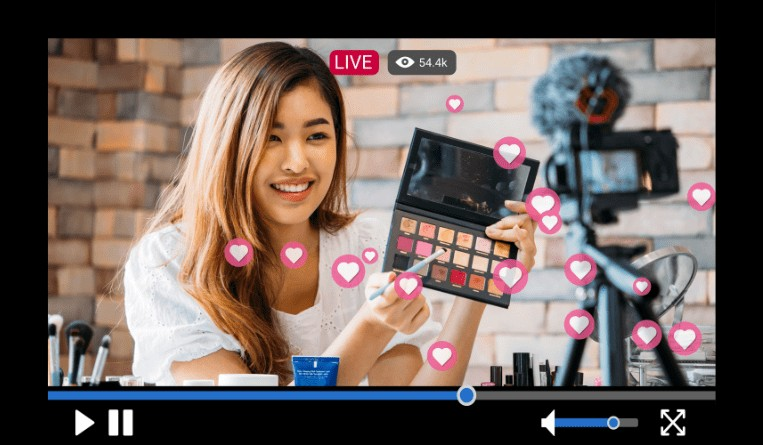
The live streaming feature has become increasingly popular on platforms like Instagram, Facebook, and Twitch. Twitch has even become a lucrative career for some streamers. In fact, according to a report by Business Insider, streamers in the top 100 on the platform make a minimum of $32,850 USD per month on Twitch via subs, bit donations, and ads alone. So, if your brand has a product or service that can be showcased through live streaming, it may be worth considering incorporating this trend into your social media strategy.
#3 Expertise
Inviting experts to share their insights and opinions on your social media channels is a great way to showcase your brand's authority and knowledge in a particular field. It not only helps in building trust among your audience but also attracts new followers who are interested in the expert's work or insights.
You can also collaborate with thought leaders in your industry to create content and spread awareness about your brand. For instance, you can ask an industry expert to conduct a Q&A session on your social media channels, or ask them to contribute to a blog or a podcast episode. If the post targets the foreign audience, it’s better to invite a country’s local expert who will be familiar to this audience so that to build trust and credibility. By doing so, you can tap into their network of followers and gain new followers for your brand.

Remember that showcasing your expertise is not only about highlighting your brand's strengths and capabilities, but also about providing value to your audience. By sharing valuable insights and knowledge, you can position your brand as a thought leader in your industry and build long-term relationships with your followers.
#4 Soft sell
In today's world, consumers are constantly bombarded with ads from various sources. The average American is exposed to anywhere between 4,000-10,000 ads per day. This information overload can cause people to become desensitized to traditional advertising. People are so tired of ads that their brain just skips their information, making them nothing but white noise to the eyes.
However, there is a way to overcome this issue. If ads are presented in a way that doesn't feel like advertising, people are more likely to pay attention. One effective strategy is to provide useful information or create engaging content that captures the attention of the audience. For example, creating a funny video that subtly promotes your brand can be a more effective way to reach people than a traditional ad.
#5 Interactive content and communication
Interactive content and communication will continue to be big trends in social media this year. Interactive content, like quizzes, polls, and surveys, has been increasingly popular among social media users. By engaging your audience in fun and interactive ways, you can foster deeper connections with them and encourage them to interact with your brand.
In addition to interactive content, communication is crucial for building strong relationships with your audience. Responding to comments and messages, as well as offering multiple ways to communicate with your buyers, can go a long way in creating a positive image for your brand.
It's also important to note that when communicating with your audience, it's often more effective to use a natural, conversational tone instead of formal language. Incorporating humor and slang words can help make your brand more relatable and approachable to your audience. For these purposes, you’ll need a native speaker or person with a good command of the foreign language to handle your social media account.

Incorporating the latest trends in social media can help to engage and connect with your audience on a deeper level. Read some more useful articles about marketing localization:

